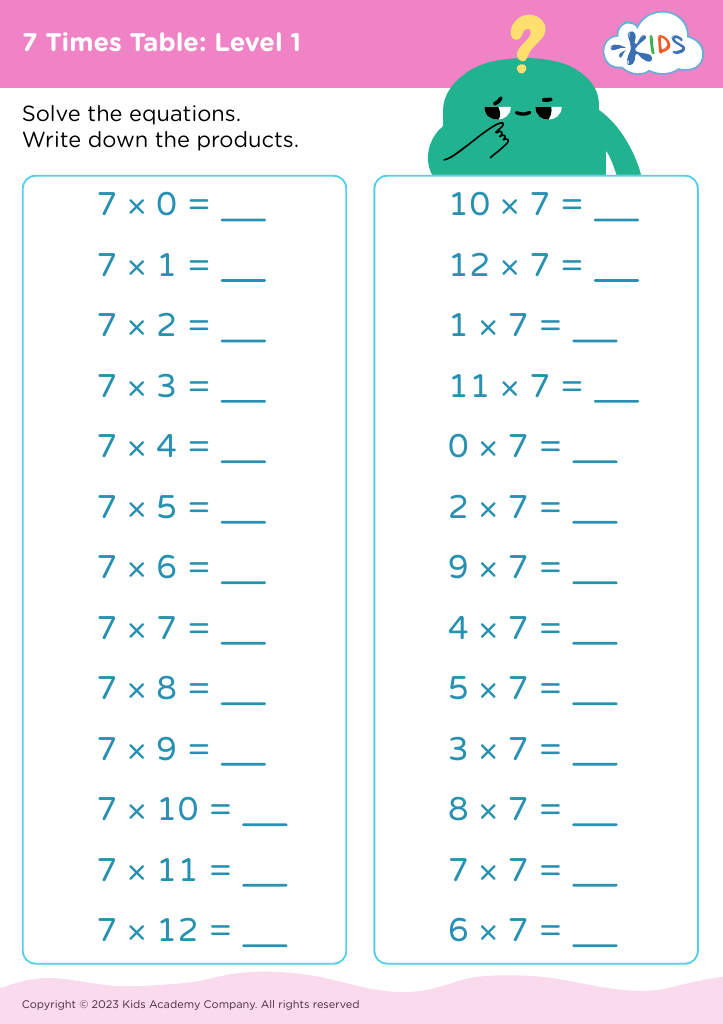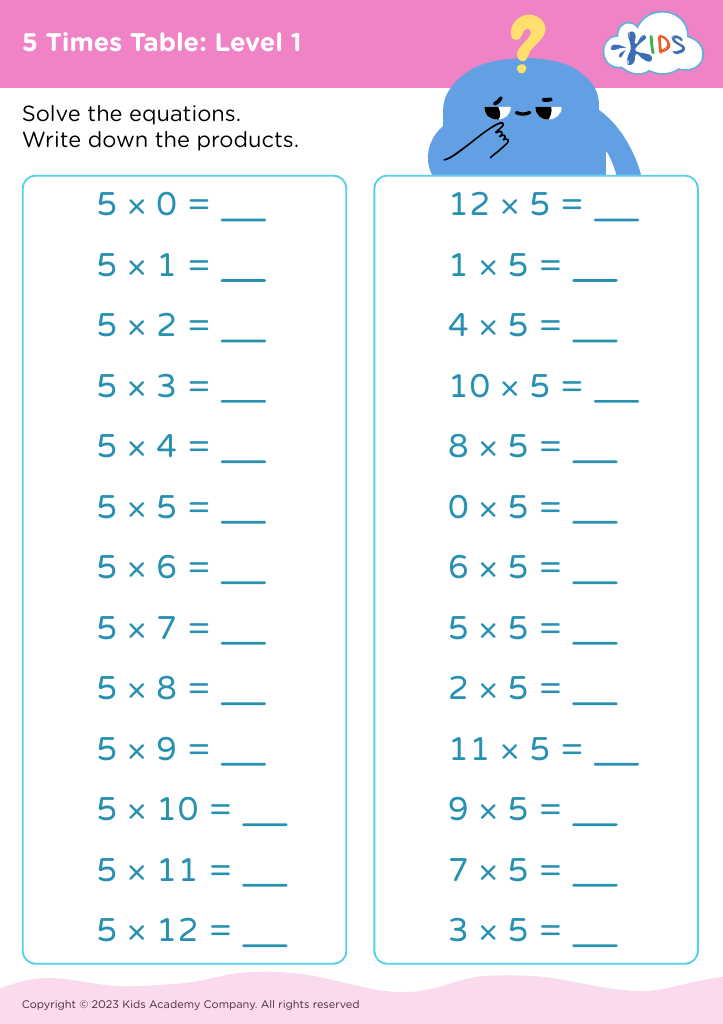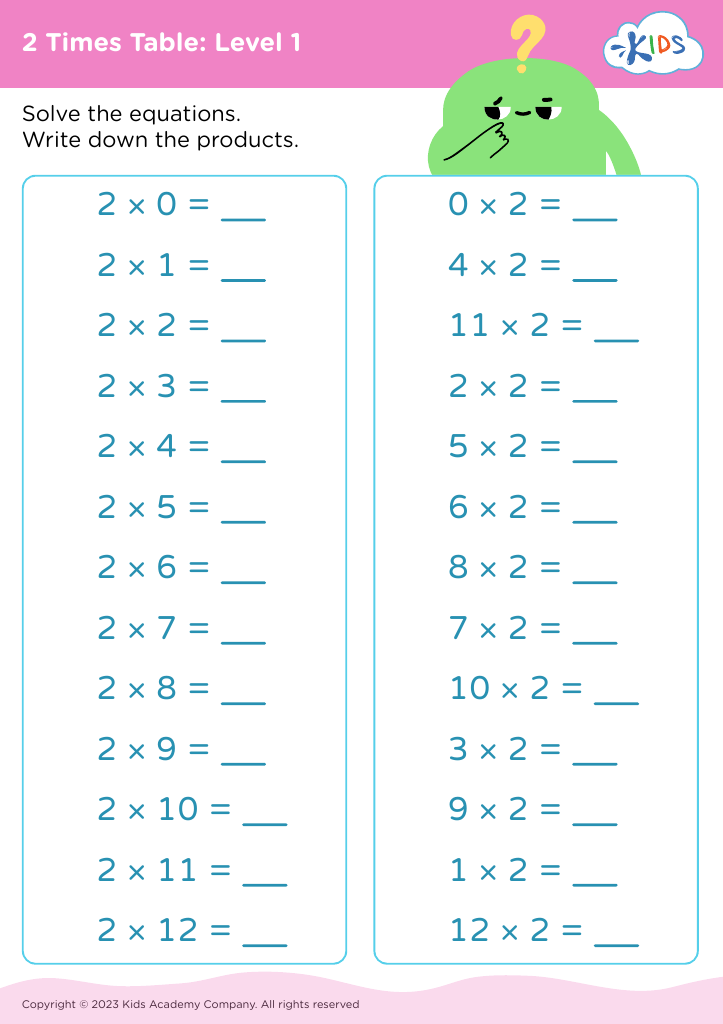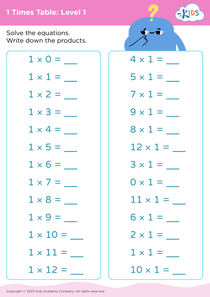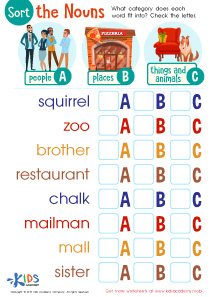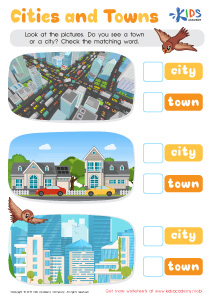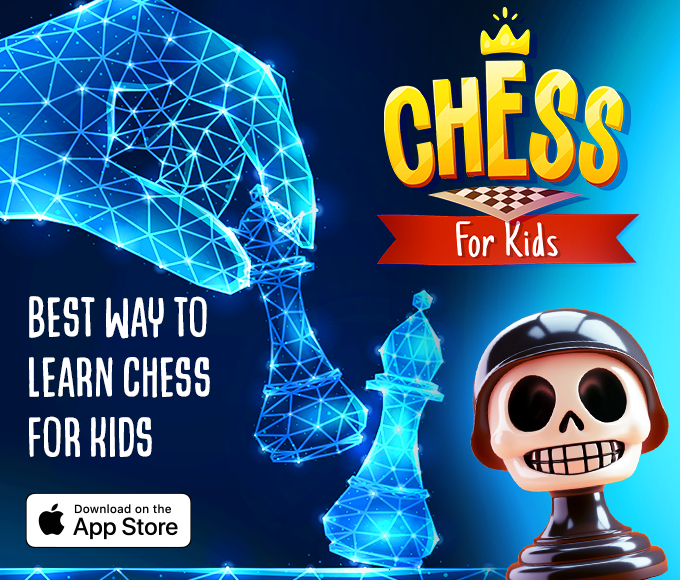Understanding times tables Easy Grade 3 Basic Times Tables up to 12 Worksheets
3 filtered results
-
From - To
Explore our comprehensive worksheets designed to help Grade 3 students master the basics of times tables up to 12. These engaging and interactive resources support young learners in developing a strong foundation in multiplication concepts. Our Understanding Times Tables worksheets present clear explanations and step-by-step exercises, making it easy for children to grasp and memorize their times tables. Ideal for both classroom settings and home practice, these worksheets enhance critical thinking and problem-solving skills while keeping students motivated. Discover the joy of learning math through fun activities that build confidence and competence in multiplication! Perfect for easy and effective learning.
Understanding times tables is crucial for Grade 3 students as it establishes a foundational skill necessary for their future mathematical success. Mastery of times tables up to 12 aids children in performing arithmetic operations more efficiently. When students can quickly recall multiplication facts, they can tackle more complex math problems, such as division, fractions, and even fundamental algebra concepts, with greater ease.
Parents and teachers should prioritize this learning because it builds confidence in students. A strong grasp of multiplication can enhance a child's overall academic performance and alleviate math-related anxiety. Additionally, these skills are essential for real-world applications, such as budgeting, shopping, and problem-solving.
Moreover, engaging with times tables supports cognitive development. Rhythmic patterns and repeated practice can improve memory retention and help students develop critical thinking skills. Collaborative learning activities, such as quizzes and games, can make this process enjoyable, fostering a positive attitude towards mathematics.
Ultimately, understanding times tables isn’t just about numbers; it equips children with the tools necessary for lifelong learning. By emphasizing the importance of times tables, parents and teachers can create a solid base for their students’ mathematical journey.
